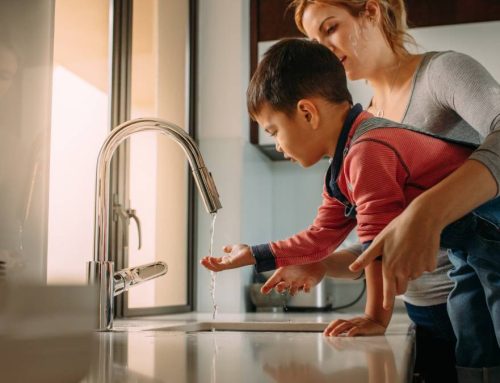Your Trusted Source for Sustainable Home Tips

Living in an energy-efficient home is all about finding your perfect idea of comfort, lowering your energy costs and doing so as efficiently as you can. A few simple adjustments around the house are all it takes to achieve your energy efficiency goals. Consider the most common areas of energy waste in the average North American home and what you can do to fix them.
1. Too Little Insulation
If your attic, walls and floors have too little insulation, you’re probably experiencing heat loss, not to mention money. Proper insulation keeps heat indoors during the cold months and out during the summer, so the HVAC system won’t need to run overtime.
- The fix: Boost insulation levels to the attic, usually the most cost-effective spot for added insulation. There are several different types of insulation to work with, like fiberglass batts, blown-in cellulose and spray foam. Consulting an experienced technician is often worth it for the expert advice and quality work.
2. Run-Down Appliances
Older refrigerators, dishwashers and washing machines use more energy than newer models. Lack of maintenance over the years can make things even worse.
- The fix: Operate your appliances with efficiency in mind. This means waiting until the dishwasher is full to run it, using cold settings for laundry and avoiding overloading the dryer. In fact, you should air-dry clothes whenever possible. As for the fridge and freezer, remove debris from the coils for optimal performance. And when it’s time to replace your appliances, look for high-efficiency models with ENERGY STAR® labels. They’re designed to save on power without losing out on total performance.
3. Inefficient Lighting
Older incandescent bulbs are well-known energy wasters. In fact, they tend to produce more heat than light, which isn’t just more expensive—it also forces your AC to work harder.
- The fix: Switch to LED bulbs, which are much more energy efficient and last far longer. Additionally, remember to switch off lighting when you exit the room. And for good measure, unplug any electronic devices when you’re not using them. For even more savings, consider installing smart bulbs and plugs to manage devices wherever you need to.
4. Take Advantage of Solar Energy
If you’re ready to take your energy efficiency to the next level, it’s worth considering investing in solar power. Solar panels provide enough power during the day while an integrated battery system stores excess energy for use at night and on stormy days. While solar-compatible systems come with up-front costs, government incentives like rebates are offered to help offset the investment.
5. Water Heaters
Your worn-down water heater is a big energy consumer, especially in homes where it’s kept at excessive temperatures or is even oversized for your household’s needs. Water heaters also experience heat loss through pipes without insulation, adding unnecessary costs to your monthly expenses.
- The fix: Learn about the benefits of investing in a tankless water heater, which provides hot water on demand. If this isn’t an option, add insulation to your tank and pipes, set the temperature to 120° F and do your best not to neglect water heater maintenance.
6. Old, Leaking Windows and Doors
Leaks in your windows and doors let heat escape in the winter and bring in hot air during summer. In each case, your HVAC system is pushed harder.
- The fix: If replacing all the windows isn’t affordable, apply caulk and weather stripping around doors and windows to seal drafts. Once you’re thinking about a window upgrade, go for energy-efficient, low-emissivity (low-E) windows. These designs reduce energy loss by creating an insulating air barrier between the inside and outside of your home.
7. HVAC System Upgrade
Heating and cooling make up over half of the energy consumption in most homes. When your HVAC system is old, it may have to stay on longer and might struggle to achieve the desired temperature. Oversized units are also a potential problem, as they are prone to short cycling, leading to unstable temperatures, poor control over humidity levels and added strain on the system. Then, air duct leaks waste more energy, forcing your system to use more energy to meet comfort levels.
- The fix: Upgrade to a properly sized energy-efficient HVAC system and have the air ducts tested for efficiency. After, set up preventive maintenance to keep the system running at its peak for years to come. Installing a programmable thermostat also helps. Installing one lets you adjust temperatures more precisely based on your schedule, so you don’t waste energy on climate control when you’re not at home.

